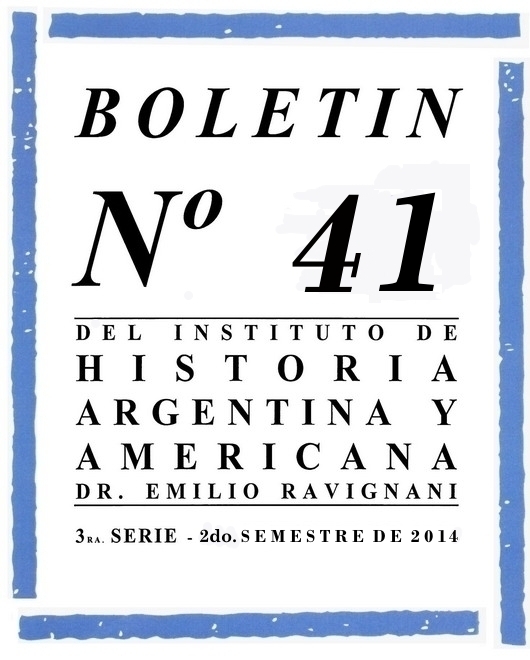LA CUARTA FUNCIÓN DEL CRIOLLISMO Y LAS LUCHAS POR LA DEFINICIÓN DEL ORIGEN Y EL COLOR DEL ETHNOS ARGENTINO (DESDE LAS PRIMERAS NOVELAS GAUCHESCAS HASTA C. 1940)
Abstract
In his classic study of the “criollista” discourse in Argentina, Adolfo Prieto argued that its remarkable expansion in the late 19th century was the consequence of three concurring reasons. The fading gaucho world was appealing (firstly) for the criollo lower classes, as an expression of nostalgia and of the anxieties brought about as part of the experience of modernization; (secondly) for the immigrants, as an easy way to feel part of the nation by identifying with a symbol of national authenticity and, (thirdly) for the elites, as a way to claim precedence and legitimacy for themselves by excluding the rebellious newcomers from the nation. It is the contention of this article that popular criollismo played a fourth function, which should be listed alongside the three already mentioned. Criollismo was appealing, at least in part, because it was one of the channels through which local culture managed to allude to the ethnic heterogeneity of the Argentinean people (its non-white and mestizo components in particular), longtime denied by the dominant discourses of the nation.Downloads
The copyright is transferred to the Boletín, but the authors may retrieve them and reproduce their work in other media or formats by means of a written request to the Editorial Committee. In such cases, the Boletín will be cited as the first publication of the work.
The works are licensed under a Creative Commons Attribution-NonCommercial 4.0 International License, which allows others to share the work with an acknowledgment of their authorship and initial publication in this journal.
Also, by written request to the Editorial Committee of the Boletín, the authors may separately establish additional agreements for the non-exclusive distribution of the version of the work published in this journal (for example, placing it in an institutional repository or publishing it in a book), with an acknowledgement of its initial publication here. No commercial uses are allowed.



















